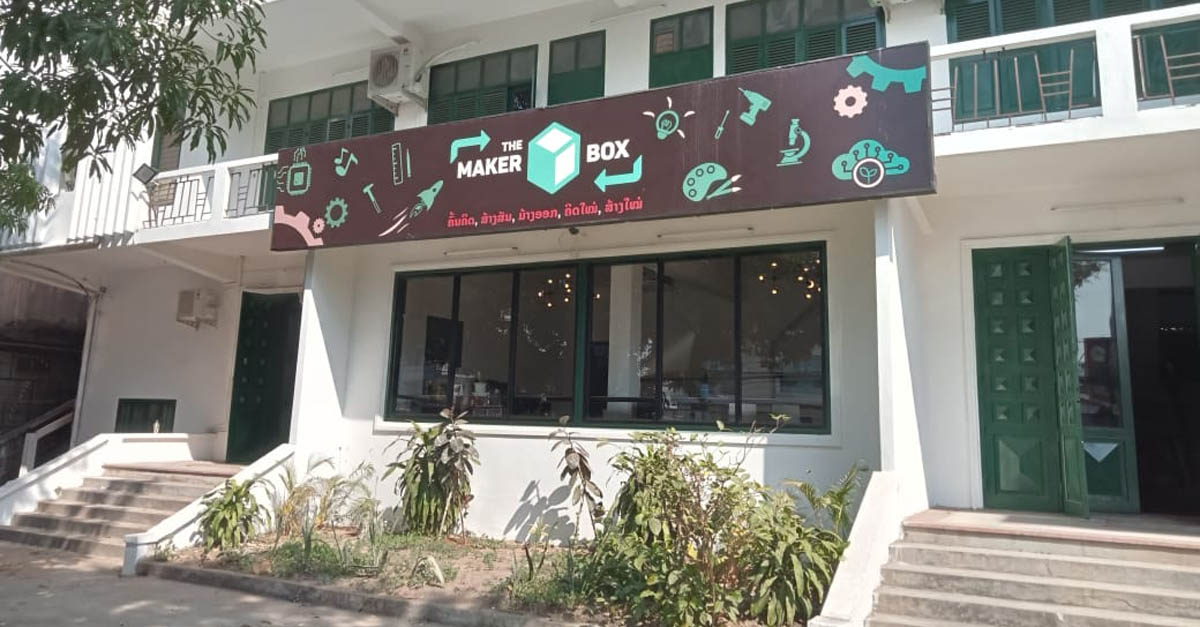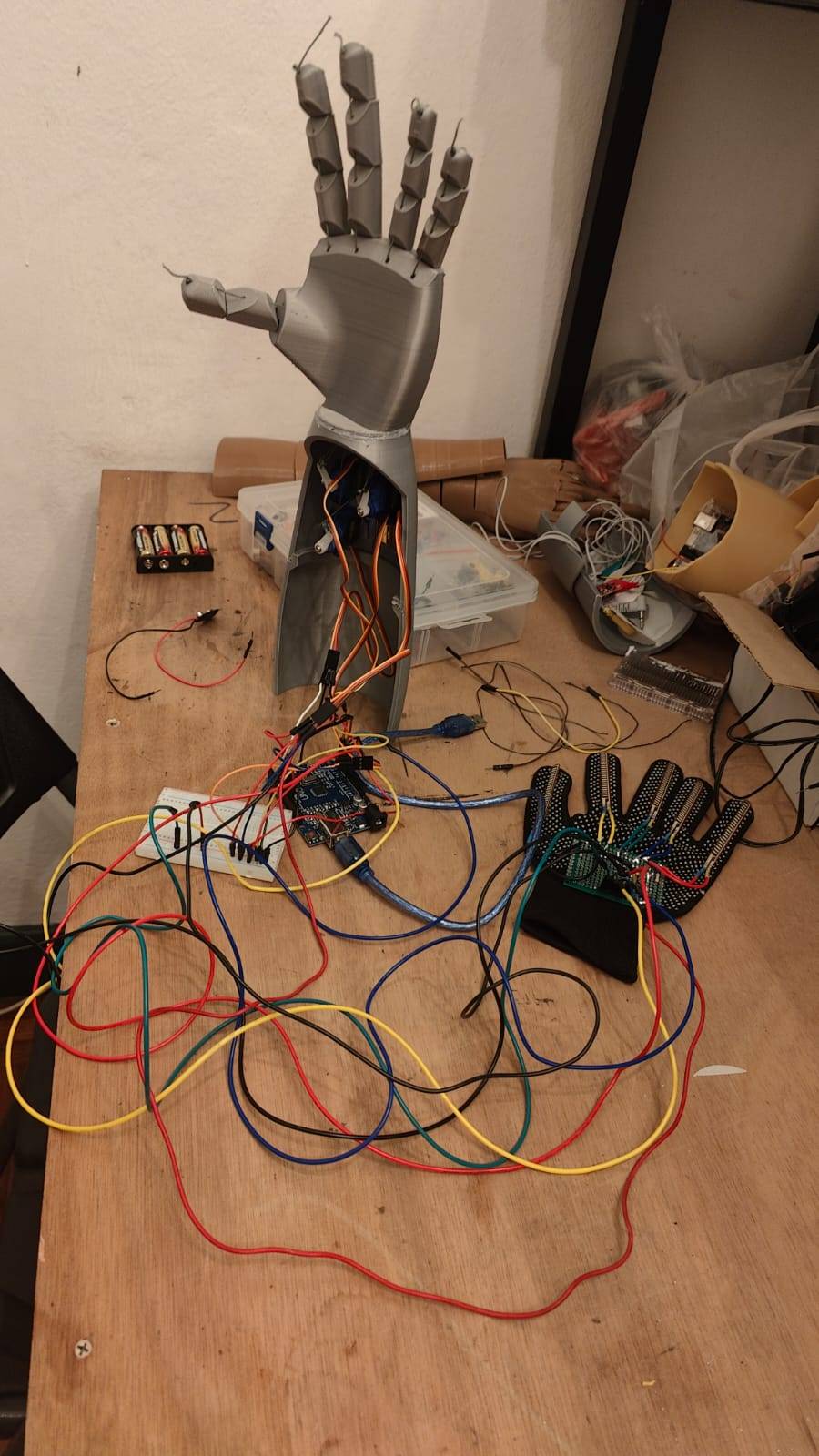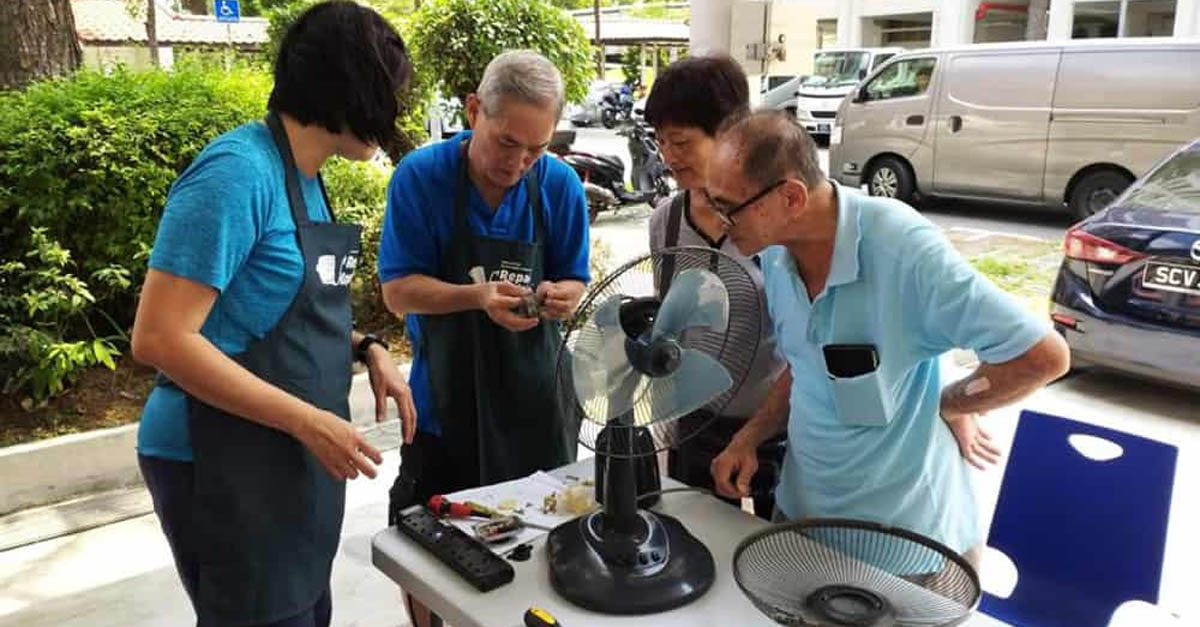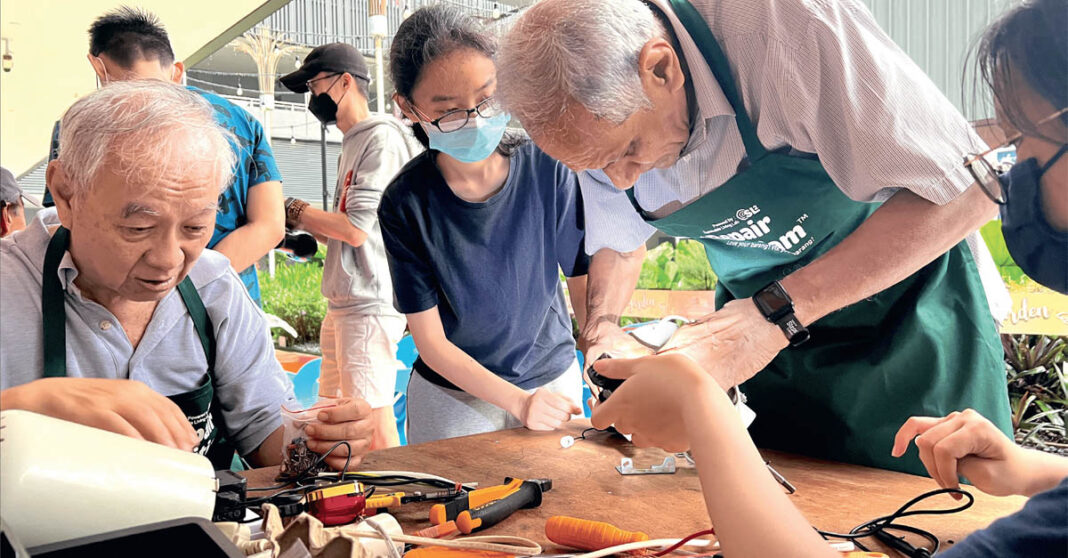Electronic waste, or e-waste, is a rapidly escalating environmental concern in Southeast Asia (SEA). As the region undergoes prolonged development and modernization, the demand for electronic devices and gadgets — such as smartphones, laptops, and household appliances — has surged to unparalleled levels. Despite the persistence of this issue, some countries in the region, including Laos and Singapore, have made efforts to curb and reduce electronic waste within their borders.
While Laos has been focused primarily on plastic waste, some organizations in the country are making efforts to tackle broken electronic gadgets.
Serge Doussantousse, Manager of Green Vientiane, non-profit organization working on environmental issues in Vientiane Capital, noted that the situation of e-waste in Laos is concerning, with the fast increase of electronic devices reaching the end of their life cycle.
“While some people try to repair or sell them [e-waste], a lot of it ends up in landfills or is sent to recyclers, with plastic being the main component of TV screens and computers, making recycling challenging,” said the manager.
A landfill site at KM 32 in Xaythany district, Vientiane, shreds e-waste and prepares the garbage to be converted into energy for cement kilns, with an average revenue of USD 50 per ton of shredded plastic, Doussantousse explained to the Laotian Times.
However, this system is not economically viable due to high transportation and storage costs, he added.
To address the issue, Green Vientiane suggested electronic manufacturers be more responsible in facilitating the repair and maintenance of their products to further extend the items’ lifespan and reduce e-waste.
Following the steps of Green Vientiane, a two-year-old public community in Laos has already made significant progress in e-waste recycling.
Lao Public Community Tackles E-Waste with Repair and Education Initiatives

Ken Streutker, Chief Marketing Officer of Makerbox Lao, a public community that provides a workspace for individuals who want to conduct a science project, noted that “a part of e-waste is also plastic waste. It’s one and the same thing; they’re tied together because electronics are wrapped in plastics.”
Nevertheless, Ken agreed that Laos needs more awareness of e-waste due to the growing amount of electronic garbage scattered on the streets and in garbage cans, which leads to the efforts to address such rubbish by Makerbox Laos.
“We’ll take those in. And we’ll have a look at the actual equipment itself, and test the various components. Sometimes, it is just a matter of replacing a power source or sometimes just a new hard disk. If we can salvage parts from other similar models, then we refurbish. we refurbish what we can.“
The marketing officer mentioned that salvaged laptops or desktops will be stationed at the workspace for students or visitors at Makerbox. If there are too many devices, the “not too damaged” ones will be donated to schools lacking computers.

“There’s enough spare parts from different models (of IT equipment) around that we can actually cannibalize some of the other equipment that we’ve got to help repair or replace broken parts on others,” he said.
Streutker recommended that people turn to repair shops in town should they need their home appliances repaired, such as food blender, toaster, oven, etc.
If the item cannot be repaired, the expert will dismantle it into pieces. Each piece will be checked to see if any parts can be recycled or sold locally.
Additionally, owners of their electronic devices may have a chance to sit down and learn how the experts at Makerbox Lao fix their materials. Streutker suggested anyone who might want to learn how to repair their house appliance can bring their item into the workspace and have experts walk them through the fixing process.
Makerbox also addresses obsolete electronics with its old battery donation program. Ken explains that even seemingly empty batteries have “some juice left.” Once fully depleted, the workspace stores them until they accumulate in bulk, then sends them to Thailand for proper disposal.
“If you tell people, ‘Bring in your toaster and learn to fix it for a certain fee,’ they’ll likely respond with, ‘Forget it,’ and just buy a new one,” said the Makerbox Lao officer. He then asked, “How do you create an incentive for people to come in and learn how to fix things?”
Looking into the future, Streutker expressed interest in exploring the possibility of an e-waste reduction project that involves having people bring not only their broken electrical equipment but also their household into Makerbox and learn how to fix their equipment from the experts.
Repair Kopitiam: Singapore’s Community Effort to Extend the Lifespan of Electronics
While Makerbox Lao is still in the process of realizing its ideal project to address e-waste issues, Singapore has successfully established a small community called “Repair Kopitiam.” with aims to reduce and repair e-waste and dated electronic items.

Weng Wanying, Senior Consultant of Singapore’s Sustainable Living Lab, a sustainability consultancy and innovation lab founded in 2011, runs the community. She explained that kopitiam is a colloquial term for “coffee shop”. Based on that concept, Repair Kopitiam positions itself as a small community that gathers people to come together and fix electrical items.
The community, operating since 2014 with a total of 12 branches across the country, encourages individuals to bring in their broken home appliances, particularly electronic devices like torn clothes, old furniture, fans, ventilation, toasters, ovens, and televisions, to learn how to repair them.
With the slogan “Love your barang, Fix your barang” , with barang translates to item in Malay, the enterprise focuses on extending the lifespan of electronic items through repair. According to Weng, the main goal of the enterprise is to use a “snowball method” to pass on repair knowledge. During repair gatherings, Repair coaches teach visitors, who then educate others around them.
To equip interested individuals with the essential knowledge about repairing, the community offers a three-month course for people to learn how to repair everyday items, with an intensive focus on practical learning. To elaborate on the idea, Weng said, “So they get to work with the community, help them fix their items and that’s how they learn on the job essentially.”
The senior consultant used a case of a fan as an example “It is just a matter of the capacitor that is within the fan,” she said, adding that “changing a small little part which probably costs about 50 cents to a dollar, you can fix the entire fan.” Weng further emphasized the kopitiam’s encouragement towards owners of electronic items to try to diagnose their material before changing or purchasing an entirely new appliance.

The majority of people who participated in their repairing course are older males. Weng explained that seniors in Singapore consider repairing activities as a good practice for their brains and also a chance for them to interact with others, which she described as something the senior citizens in general desire.
“Keep an active mind, healthy mind, because when you’re repairing, it is a lot of problem-solving, trying to tear the appliance apart, trying to figure out what’s wrong, right?”
“It does keep the mind active and keeps your hands agile as well.”
Despite their main focus on elders, the senior consultant addressed the variety of people of other ages who expressed interest in learning to repair.
Similar to Makerbox, when encountering something that is beyond repair, Repair Kopitiam would dismantle parts of the item to see if any pieces are still usable. “It is like we get to learn about urban mining over here where a lot of times our laptops, our phones, even though they may not be functioning anymore, there’s still a lot of precious metals within them.”
When asked why they suggested repairing instead of buying a new product, given that the prices are not much different, Weng, an advocate for repair over recycling, noted that the Repair Kopitiam has been making efforts to promote the concept of “Design for Repair.” This approach encourages companies to consider the repair process of their products by providing a repair guideline or including replacement parts with each item.
“When they were building a bed or an oven, they knew that certain heating elements or certain parts where the gears constantly move and open and close the door would wear and tear faster. So, they needed to have replacement parts for those.,” the senior consultant explained, citing that a few companies in Europe have already taken steps with this idea.
While the repair cost is free, in cases where the community does not have specific spare parts for an item, they may request the owner to procure the necessary pieces.
However, the senior consultant added that while the community offers to fix a variety of electronic items, they would refuse to fix something as specific as smart phones of renowned brands so as to not “steal the job” of their respective companies.
Despite efforts to reduce e-waste in SEA, global statistics indicate that the world is still accumulating a significant amount of discarded electronics. Singapore, for instance, generates over 60,000 tonnes of electrical and e-waste annually, with this figure expected to rise alongside economic growth and the increasing use of electronic equipment. Thailand similarly produces approximately 400,000 tons of e-waste domestically each year.
The United Nations’ latest Global E-Waste Monitor report forecasts that global e-waste generation will surpass 74 million metric tons by 2030.
*Phontham Visapra visited Singapore’s Repair Kopitiam as part of the Singapore International Foundation’s Journalist Visit Programme in Singapore on 4 June, 2024.



